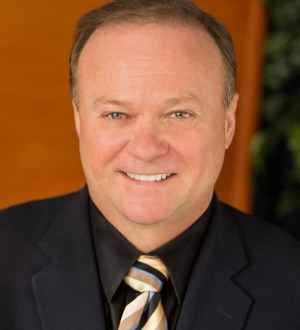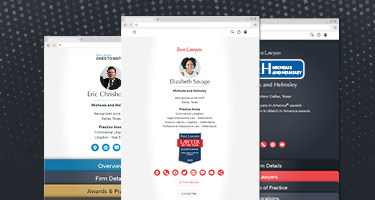By John M. Goralka
Sacramento, CA
This article discusses the contest of Barron Hilton’s family trust, which centers on changes made by Barron Hilton after the death of his wife, Marilyn. Barron gave 97% of his estate to charity, leaving only 3% to his children and family. While the Hilton family’s wealth is beyond our imagination, there are lessons that we can all learn from the steps Barron took to minimize the potential that his family would contest or challenge his wishes. Details from their estate plan may be applicable to us all.
Background on the Hilton family
William Barron Hilton and Marilyn Hilton had eight children. Barron became the CEO and president of Hilton Hotels Corporation in 1966. He ran Hilton Hotels until 1996. Barron was very successful. He established the Los Angeles Chargers and formed the Carte Blanche Credit Card Company.
Marilyn Hilton died on March 12, 2004. Barron and Marilyn’s estate plan included a marital trust. Many estate plans include subtrusts that spring into existence upon the death of the first spouse to die. A very common structure is an ABC subtrust format that uses a survivor’s trust, marital trust and family or bypass trust.
The A trust, often referred to as the survivor’s trust, holds the surviving spouse’s separate property and his or her interest in any community property. The B, or marital trust, would hold the deceased spouse’s share of community property and any separate property that he or she owned at the time of his or her death not allocated to trust C. The C trust, or family or bypass trust, is funded with the deceased spouse’s assets in an amount equal to or up to the unused lifetime estate tax exemption. The estate tax exemption in 2024 is $13.61 million.
The C trust is typically irrevocable in order to move those assets outside of the surviving spouse’s estate and to minimize or avoid estate taxes. The marital trust is generally irrevocable by terms in the trust. This is often done to ensure that the surviving spouse cannot change the trust or its beneficiaries upon the other spouse’s death. In this way, each spouse knows that, at his or her death, that spouse’s share cannot be changed by the surviving spouse. This is often a key concern, as the surviving spouse may later remarry or become susceptible to influence.
The marital trust for Barron Hilton was irrevocable and provided income to Barron for his entire life. Perhaps to motivate his children and family to not contest his gift of 97% of his estate to charity, Barron disclaimed his interest on the marital trust late to provide for those assets to go to his children 14 years before his death.
Hilton Hotels was acquired by Blackstone Investments in July 2007 at a value of $26 billion. In 2007, Barron Hilton told his family and announced publicly that he would leave 97% of his remaining trust estate to the Conrad N. Hilton Foundation established by his father, Conrad Hilton.
Barron utilized a number of steps to minimize a potential contest by his children and family of the substantial charitable gift to the family foundation. Despite these precautionary steps, the family did contest the trust and charitable gift. The IRS then denied the charitable deduction until the trust contest is resolved.
The lessons that we learn from Barron’s attempts to avoid that trust contest can be incorporated into our own estate plans.
1. Consider a nonqualified disclaimer, if appropriate.
To help ameliorate his children’s probable disappointment that Barron was leaving 97% of his remaining estate to charity, Barron provided for his children to receive a substantial amount held in the marital trust during Barron’s life. By its terms, the marital trust would pass to Barron’s children upon his death. Barron was able to accelerate this distribution to his kids with an unqualified disclaimer.
A qualified disclaimer is defined in Internal Revenue Code Section 2518, which requires (1) that it be written, (2) that it be received by the title holder within nine months of creation of the interest, (3) that the disclaimant has not accepted any benefits of the interest disclaimed, and (4) that the interest passes to someone other than the disclaimant without any direction or action by the disclaimant. If these requests are satisfied, then the assets are effectively transferred to the beneficiaries without any gift tax whatsoever.
Many practitioners are not aware that this is not the only form of disclaimer. While income and estates are taxed under federal law, the property interest is determined under the state law in which the taxpayer is domiciled or resides.
A nonqualified disclaimer, if valid under that state’s law, is effective to transfer the property for federal estate tax purposes. In California, the disclaimer can be filed or made within a reasonable time after discovery, not only within nine months. However, because it does not meet the definition of a qualified disclaimer, the transfer will trigger a gift tax liability. That is what Barron did. Half of Marilyn’s community property assets were funded into a marital trust. Barron received the income from that each year and could access principal if needed for his health, education, maintenance and support.
Barron’s disclaimer was approved by the California Probate Court on April 26, 2005. Barron died 14 years later on September 19, 2019. His children received his interest in the marital trust 14 years earlier than stated in the trust terms. The marital trust assets would have been included in Barron’s estate at his death. While gift tax was paid upon the disclaimer, the 14 years of appreciation after the disclaimer prior to Barron’s death was also excluded from Barron’s estate.
In deciding the best course of action, always consider the loss of the step-up in income tax basis. The assets in the marital trust would have received a step-up in income tax basis upon Barron’s death if not transferred to his family by the disclaimer. In high income tax states such as New York (15.9%), Connecticut (15.4%), Hawaii (14.1%), Vermont (13.5%) and California (13.5%), the basis step-up could be worth as much as or even more than the avoidance of estate tax when adding the state and federal income tax rates and considering future appreciation.
2. Communication is key. Discuss your wishes with your family and perhaps with others, too.
Barron Hilton revised his estate plan to provide that 97% of his remaining trust estate would go to the charity established by his father, Conrad. Barron told his family at Christmas 2007 that this change would be made to his estate plan. In December 2007, the family foundation issued a press release that Barron would make that gift upon his death. On April 9, 2008, Barron sent a letter to his children explaining why he was leaving his estate to charity and expressing his concern that receipt of unearned wealth may “warp a person’s values.” Barron also expressed his desire “to leave the world a better place.”
Direct and clear communication can go a long way in preventing estate plan contests after your death. A statement of purpose within the plan documents may also be helpful.
3. Consider a post-marital agreement if appropriate.
Barron and Marilyn entered into a post-marital agreement on February 6, 1989, providing that certain assets were Barron’s sole and separate property. These assets were later excluded from the marital trust that was disclaimed to go to his children. This post-marital agreement provided Barron dictatorial control of those assets during his lifetime. The post-marital agreement provided greater certainty that those assets would go to the family charitable foundation, as Barron clearly wished.
Post-marital agreements can be important tax planning and asset protection tools. Some families, after a very long-term marriage, may convert separate property to community property to obtain a basis step-up upon the death of either spouse. An upstream basis trust, providing a power of appointment perhaps with the requirement of a third party’s consent, may achieve the same results with the need to convert to community property. Some estate tax planning tools, such as a spousal lifetime access trust (SLAT), can be funded only with separate property if the client is a resident of a community property state.
4. Obtain written consent if appropriate.
Barron obtained written waivers from each of his eight children that they would not challenge Barron’s disclaimer of the marital trust. A written consent can prevent a contest later, but care has to be taken when paired with a disclaimer or similar device. When using a disclaimer, you cannot direct who the ultimate beneficiary is other than relying upon the existing estate planning documents. The disclaimer cannot be conditioned upon a quid pro quo deal where the disclaimant receives something in return.
5. Consider the next generation’s attitude about money and family relationships.
For example, are the heirs ready for the money? Do they get along? Do the clients have any goals for the next generation? Who do the clients want their children to be when they are no longer there to guide them? Are they concerned about creating “trust fund babies” who do not become productive members of society? Are there any family values to be reinforced in the next generation?
6. Consider family relationships when selecting successor trustees.
Many families select a son or daughter to act as a successor trustee. However, for other families, having one sibling oversee the trust administration and the shares received by his or her siblings is a recipe for future family discord. This is particularly true if a sibling’s share is held back or restricted in some manner.
Be sure to consider the family dynamics and the ability of the children to work together. When future generations meet for holidays or other family gatherings, the focus should be on the family relationships and not on trust administration or related issues.
7. Use independent tiebreakers for co-trustees.
If co-trustees are named to serve together in a trust instrument, designating someone to serve as a tiebreaker may create an informal dispute-resolution process to resolve any future disputes without going to court. In the event of a disagreement between trustees, each trustee hires a lawyer, and a lawyer may be needed for the trust itself. If a tiebreaker is used, the co-trustees present their respective positions to the tiebreaker, who makes a King Solomon-like decision that is binding on the co-trustees. The co-trustees then return to oversee the trust while minimizing the potential for litigation.
8. Address allocation of personal property and effects.
Be sure to address or consider division or distribution of personal property and effects. I once had a trust dispute arise in a large estate that was inspired and ultimately resolved by distribution of a wooden pagoda that had great sentimental value to a beneficiary. That fact was not immediately identified and was actually the key to resolving the dispute. The trust values in dispute substantially exceeded the value of the pagoda.
The point is that pictures and other items of personal property can have high value to an emotional beneficiary far in excess of economic value.
9. Charitable planning can be a part of any estate.
We can also help make the world a better place and follow the Hiltons’ example. Charitable planning can provide substantial estate tax advantages while also providing substantial economic wealth to the family in addition to the tax savings. More modest estates can generate income tax savings when making gifts.
Using appreciated property such as stock for charitable gifts may provide a much greater benefit than contributing cash. With appreciated property, you receive a charitable contribution deduction equal to the fair market value of the item contributed and also avoid the tax incurred if the stock was sold.
Retirement assets such as IRAs or 401(k)s may be good candidates for charitable bequests. Retirement assets are very highly taxed assets in any estate. The charity would not have to pay income tax, and there is a deduction for income or estate tax purposes.
Like father, like son: The final twist to the story
The final twist to this story is that Conrad Hilton left only $10,000 to each of his nieces, nephews and daughter and $500,000 to his two siblings. The rest of his estate was given to the Conrad N. Hilton Foundation. The foundation provides funds to nonprofit organizations to “improve the lives of individuals living in poverty and experiencing disadvantage throughout the world.” Conrad, its founder, said in the foundation mission statement that there “be no territorial, religious or color restrictions” to benefactors. The foundation has awarded $3.2 billion in grants to date.
Barron contested his father’s estate plan. To settle that contest, Barron received 4 million shares of Hilton Hotels. Barron then followed Conrad’s lead and left virtually all of his personal wealth to the foundation. Barron was the second-largest philanthropist in America in 2019, the year he died. Barron’s family is now contesting his charitable gift, just as Barron contested the charitable gift of his father.
















